Hello!
We encountered issues connecting the Pioreactor to the internet throughout the semester. As a result, to test our original anode substitute, annealed graphite, we opted for an alternate setup to measure current density and quantify anode dissipation.
Our initial test involved the use of these materials;
- 4B Pencil Graphite(annealed and unannealed)
- Why annealed graphite? Check out this paper.
- Stainless Steel Iron Bolt
- Treated drinking water
Appliances;
- ~4.6V Battery System
- 5V Power Supply
- This replaced the battery system after a few tests to get the accurate voltage similar to what is supplied by the Pioreactor and to control the current
- Potentiostat
Knowing that pencil graphite is relatively fragile, we aimed to measure how much graphite might dissipate into the solution(qualitatively and potentially quantitatively).
We set up a battery pack and used alligator clips to attach the anode and the cathode to the electric system. For these tests, we used treated drinking water to minimize the risk of introducing bacteria present in tap water. This was to ensure we are quantifying the debris from the anode only.
Below shows the initial setup with the battery pack connected to the anode and cathode.
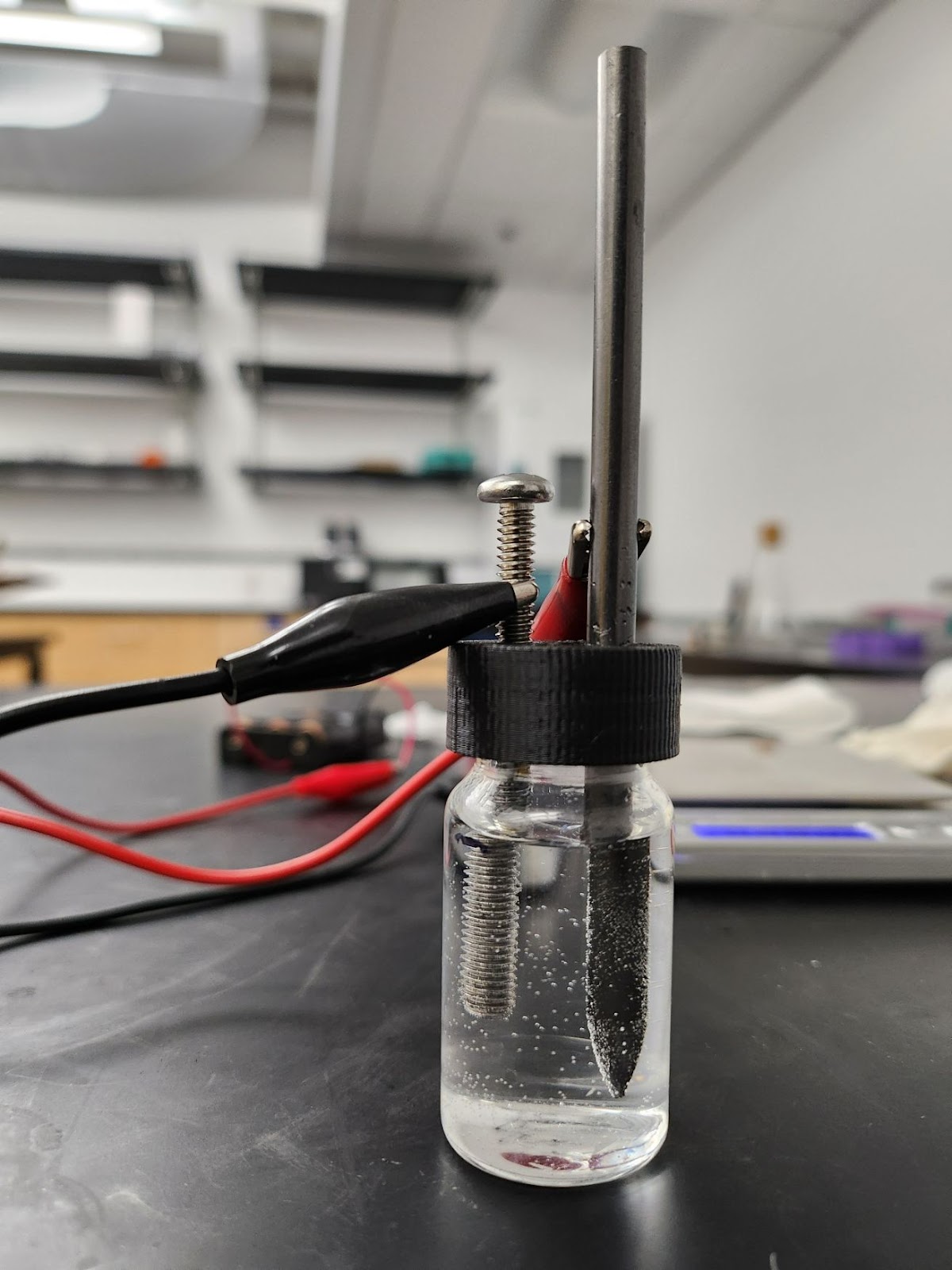
We let this experiment run for a while and below shows the contents of the vial after 24 hours. The solution developed a white cloudiness, with no visible graphite specks. We suspect this cloudiness may be due to the binding clay in the graphite, though we were unable to specifically characterize the substance.
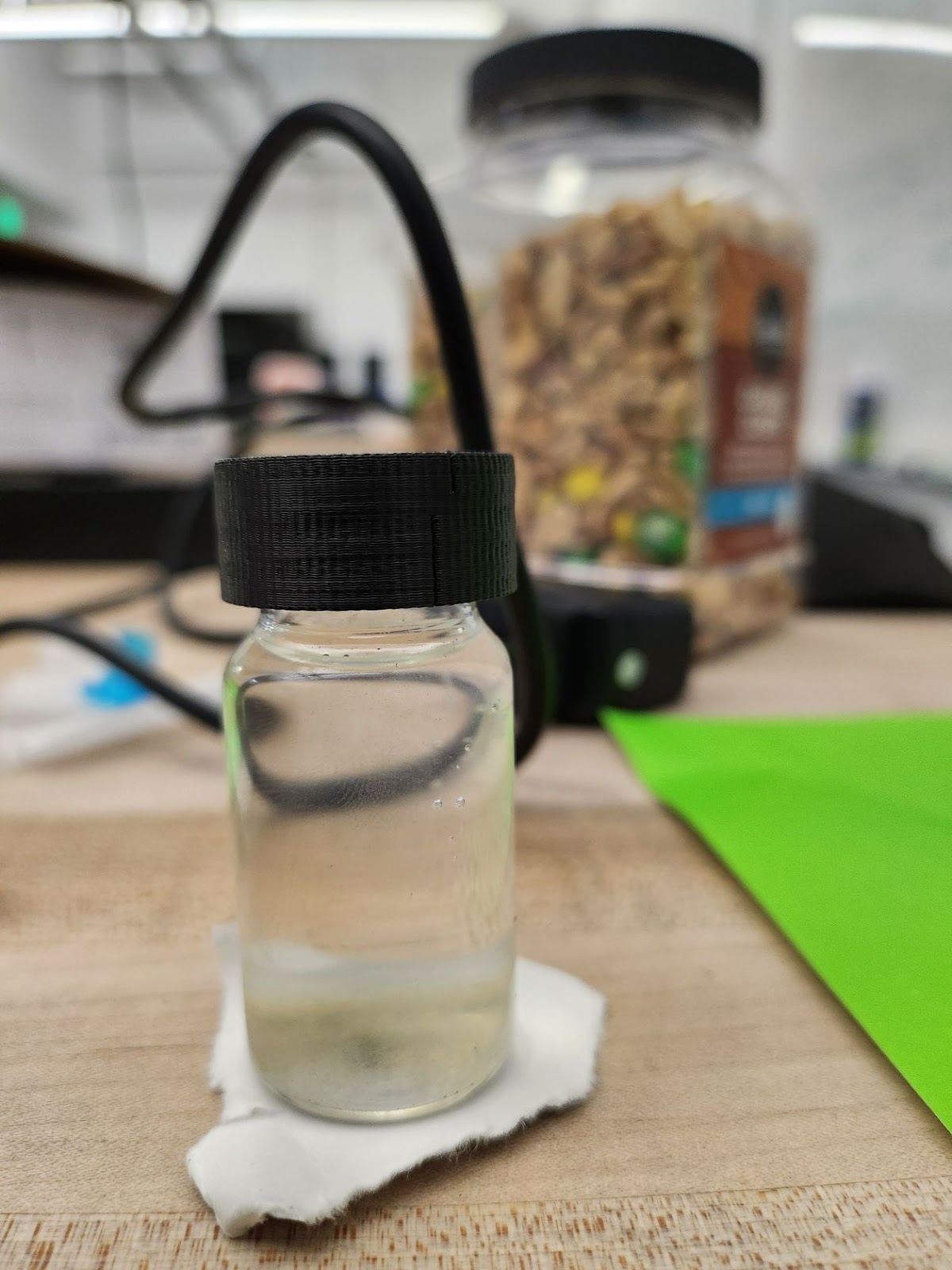

We continued the test for just over 48 hours, and the solution developed an orange-red hue, which became more pronounced as the experiment progressed
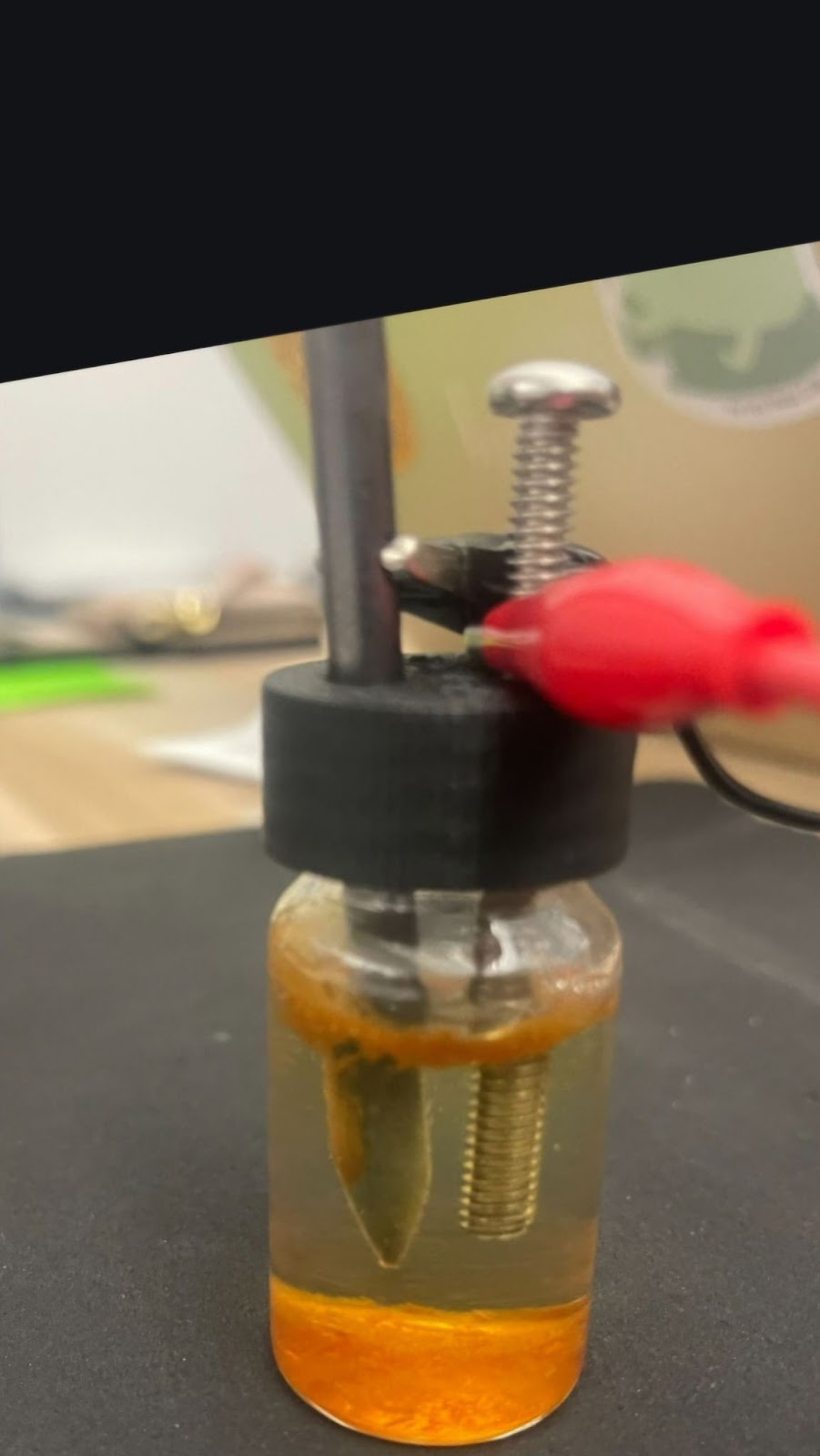
Solution after about 100 hours;

Our initial hypothesis, formed after a quick Google search to find the image below and consulting with a professor, led us to believe that the substance could be graphene oxide. Although we had not intended to include graphene oxide in the solution, we looked into its edibility and found that it appears in trace amounts in charred barbecue food, which often contributes to their smoky flavor. “BBQ-flavored” bacteria maybe? This possibility, though amusing, would require further testing to ensure safety at any concentration in the solution.
6HSVA)
Our initial plan to quantify the graphite in the solution involved weighing the vial before and after testing, with the difference representing the amount of dissipated graphite. However, this approach proved unfeasible, as we couldn’t confirm the vial’s contents or identify them as graphite particles. Additionally, we did not have access to a more precise scale capable of detecting subtle changes in graphite mass before and after the experiment.
We also observed no graphite particles in the solution and no visible degradation to the anode itself. We suspect that any degradation likely occurs in a uniform, layer-by-layer manner, too subtle to be observed with the naked eye or measured on a standard 3-decimal-point scale.
We carried out this experiment again but with annealed graphite to see if the results would be the same. In this experiment we were able to switch out the battery system with a 5V supply from a generic Power Supply. This allowed us to accurately replicate the voltage used in the actual Pioreactor and eliminate any current being pushed which we were unable to do with using a series of batteries as a power supply.
Second round of testing set up:
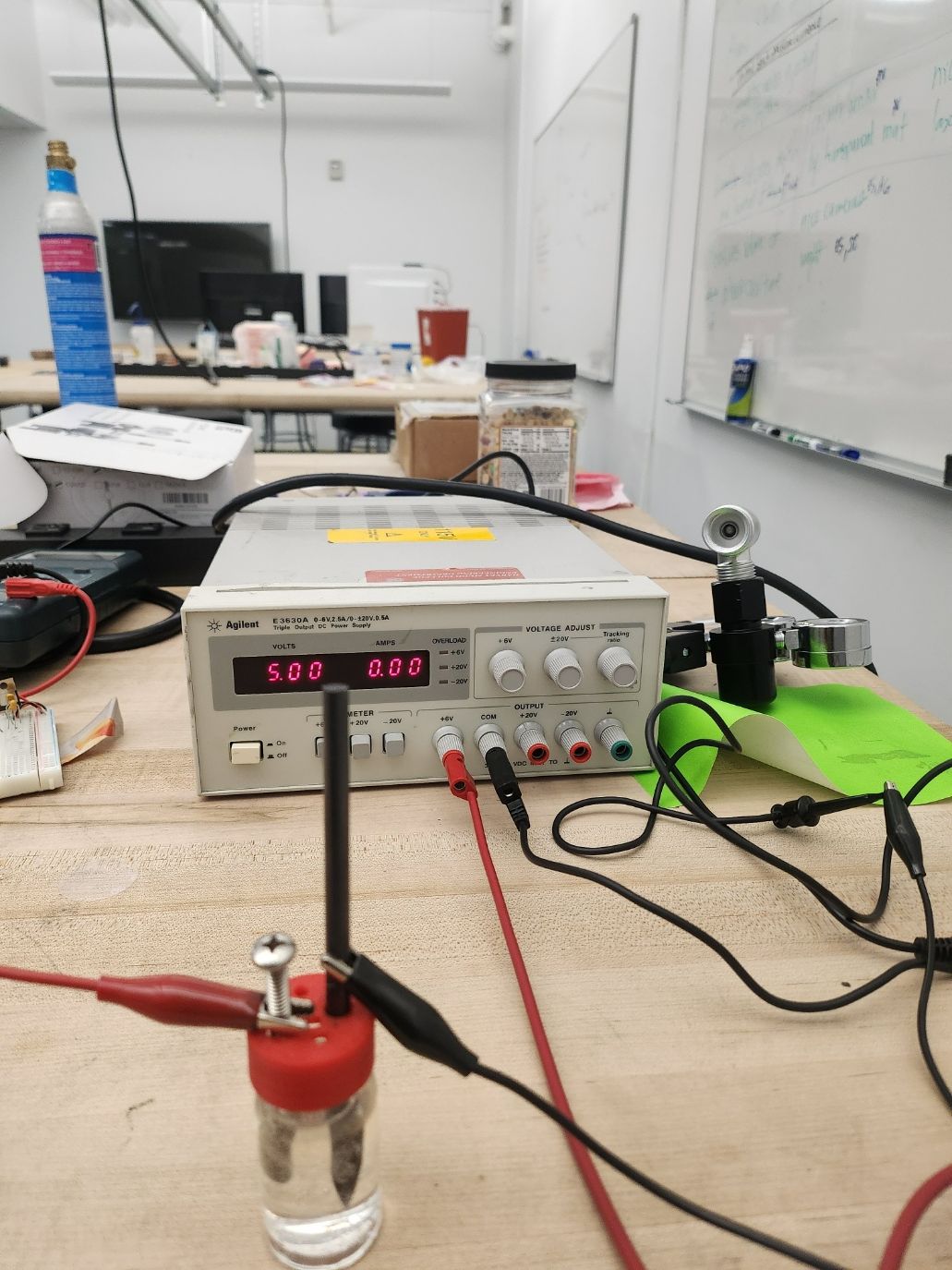
These are the results after 24 hours:
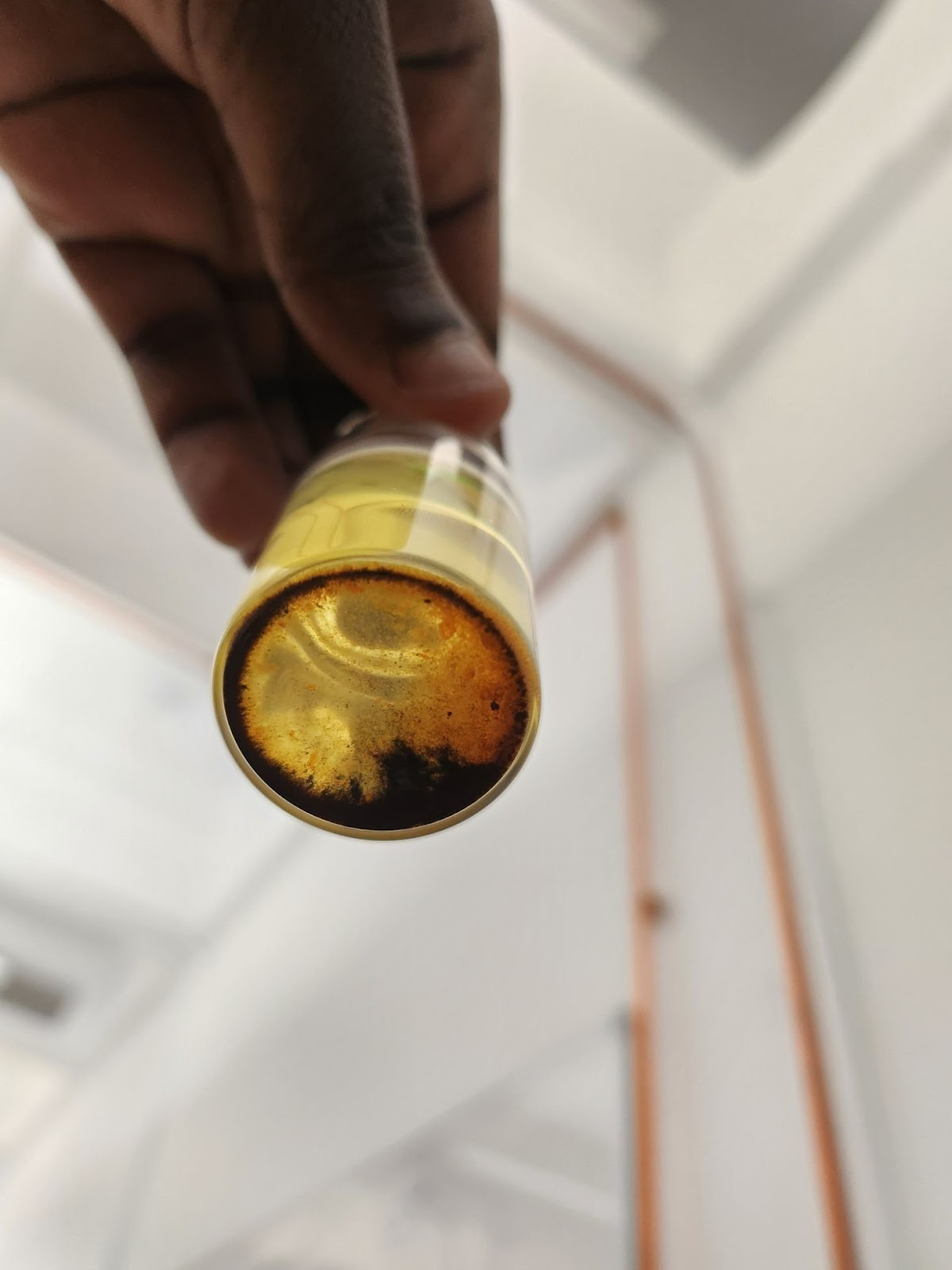
Picture of what the graphite after experiment;
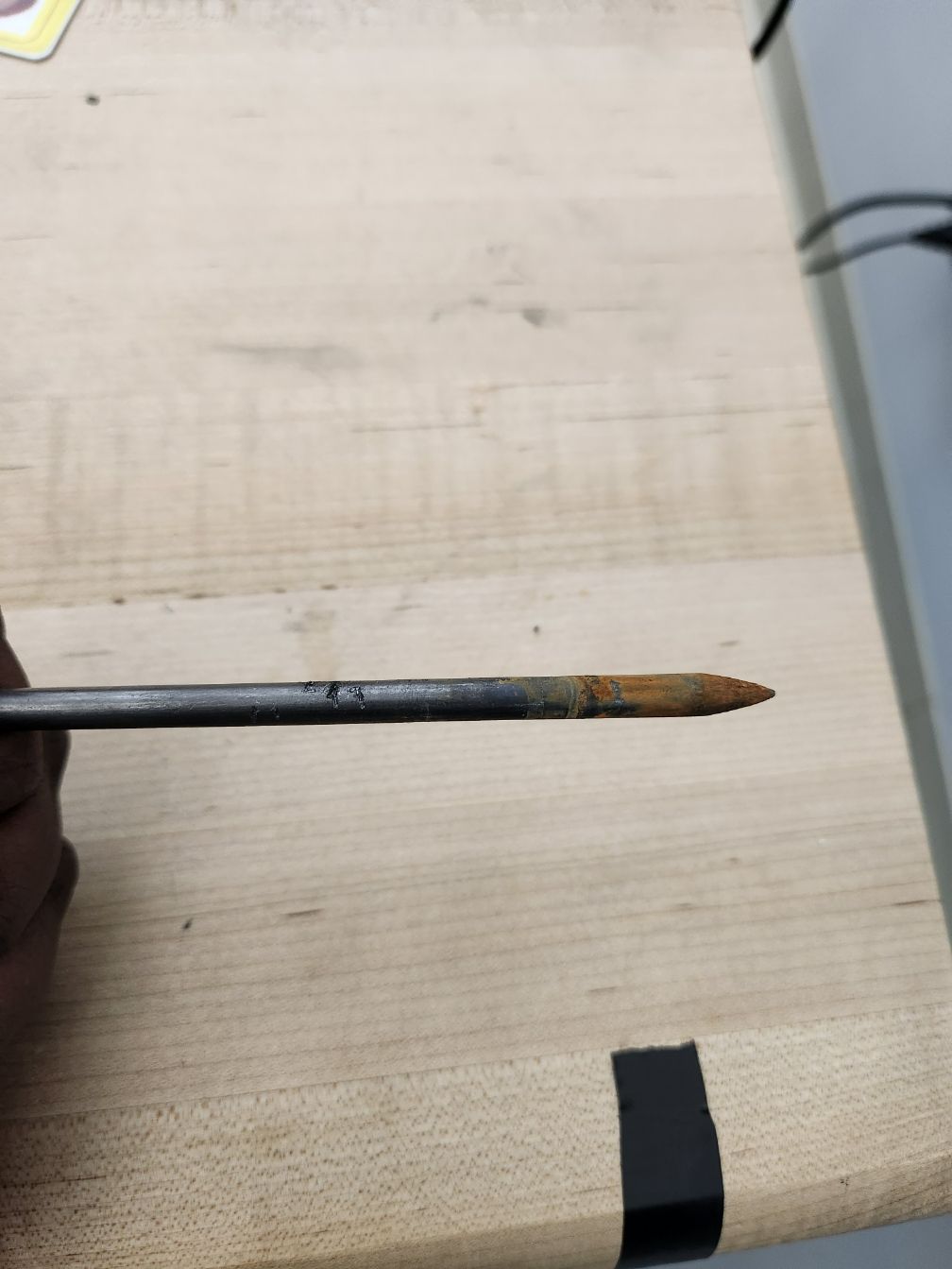
With the annealed graphite, we can clearly see the graphite particles at the bottom of the solution well as the red-orange hue in the solution.
After further research and consultations with chemistry professors, we concluded that the substance initially suspected to be graphene oxide might actually be rust. This rust could be formed either from the oxidation of minerals in the water or from the cathode itself. They recommended testing with an inert cathode before attempting to characterize the substance, as identifying graphene oxide through mass spectroscopy would be challenging and not particularly useful in this context.
As shown above, the anode experienced fouling, so, along with our lack of access to a more precise scale at that time, measuring its weight before and after would not have provided accurate data on how much dissipated. However, although it’s difficult to see in the image, the portion of the anode submerged in the solution was slightly thinner than the section that remained above, indicating some degree of dissipation or reaction contributing to the substance observed in the vial.
Our next steps involve testing the electrolysis process using deionized water with added baking soda for electrolytes, paired with graphite (both annealed and unannealed) as the anode and an inert cathode. This setup aims to rule out the possibility that rust is forming due to mineral oxidation in the water; if the stainless steel cathode proves problematic, we will explore alternative cathodes compatible with a graphite anode.
We are also using a potentiostat to assess the current density of graphite to ensure it’s sufficient for the electrolysis process and conducive to bacterial growth. Although we’re troubleshooting the potentiostat, the recent successful setup of the Pioreactor may shift our focus to this system.
Additionally, with new access to a 5-decimal-point mass scale, we can more accurately quantify any material dissipation by directly measuring the anode after rust elimination or by measuring the solution’s mass and calculating the difference.